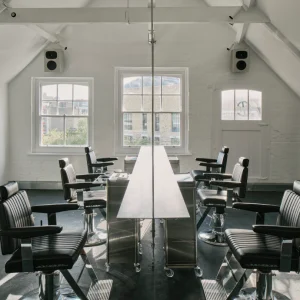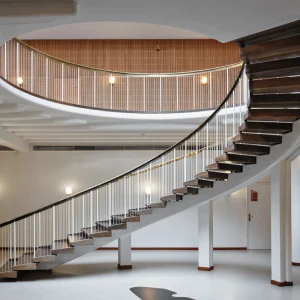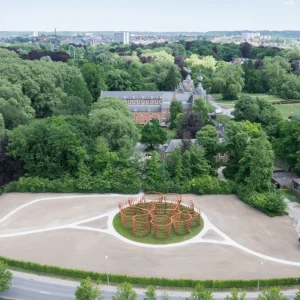In the arena of apocalyptic predictions, the year 2012 has more significance than most. According to a number of ancient prophecies and legends, December 2012 will see the end of the world as we know it – either an appealing or appalling notion, depending on how you choose to interpret it. Ancient myths and prophecies can provide fantastic inspiration for design.
Take the prophecy a stage further and the idea of an ideological apocalypse leads us to ponder what will come next – rebirth after destruction? A new beginning or a radical transformation?
Over the past year this debate has been ever present in popular culture, with film-makers and novelists delving into the tension of an impending disaster. For example, the Twilight films and The Hunger Games illustrate how an obsession with dystopian worlds can attract mass-market cult followings.
In literature and art too we’ve seen novelists muse over the subject, with a rise in post-apocalyptic novels, such as Ben Marcus’ The Flame Alphabet and Ryan Boudinot’s Blueprints of the Afterlife. Post-apocalyptic photography – for example Lori Nix’s collection The City – also showcases both the destruction and the attraction that the notion of the apocalypse can bring.
It is a powerful trend that has permeated our society and culture, and the impact has certainly been visible in the world of design too. As a concept, it offers us endless possibilities when it comes to interior design; we can explore lines and patterns that represent destroyed, decadent architecture, the visible signs of nature taking over ruins, and the surreal patterns and electric lights of futuristic cities. As such, this trend provided us with the inspiration for our latest collection, Metropolis.
We have explored this apocalyptic theme from its most positive angle, looking at humankind’s continuous and everlasting hope for rebirth and cultural regeneration after any catastrophic event.
The uncertainty of the past, the decadence of the present and the optimism for a better future, each resulted in a range of carpet tiles in the Metropolis product collection. The past represents the unknown and draws inspiration from the irregular topography of natural surfaces and from the obscured remains of intriguing, long-lost, man-made patterns.
In the post-apocalyptic interpretation of the present no shape or line is complete, which is a deliberate attempt to visualise the depths of broken architecture. If you imagine the catastrophe and fall-out of such a destructive event then it is easy to see how patterns emerge from broken structures, producing dramatic designs.
One of the most fantastic things about this theme is that is poses so many questions. No one knows what lies ahead and so we can really use our imagination. This is what makes the idea of the apocalypse so appealing; it gives us a blank canvas on which to create the most daring and radical visions of life after a devastating, transforming event. So, when looking at the future, we had two very different visions, each of which follows a completely different design journey.
In our ultimate picture of the future, psychedelia meets science fiction, with bright candy-colours colliding and morphing. In contrast, our alternative future vision features liberated lines that creep, twist and entwine with gentle fluidity, mimicking natural elements taking over abandoned architecture.
It is a designer’s challenge to analyse these key trends and translate them into practical designs. Design is certainly moving on; nowadays, products are being created to utilise space and include multiple features, making each product a piece to explore, rather than it being just ‘part of the furniture’.
This is certainly something we have seen translate into the flooring industry, which is becoming increasingly progressive in terms of design, variety and creativity. As such, the level of expectation of what a flooring solution can, and should, contribute to the overall creative design, is much higher than it once was.
Metropolis, our interpretation of the apocalypse into flooring design, is a collection which has layers, tones and textures, creating surprise and intrigue across the floor surface.





